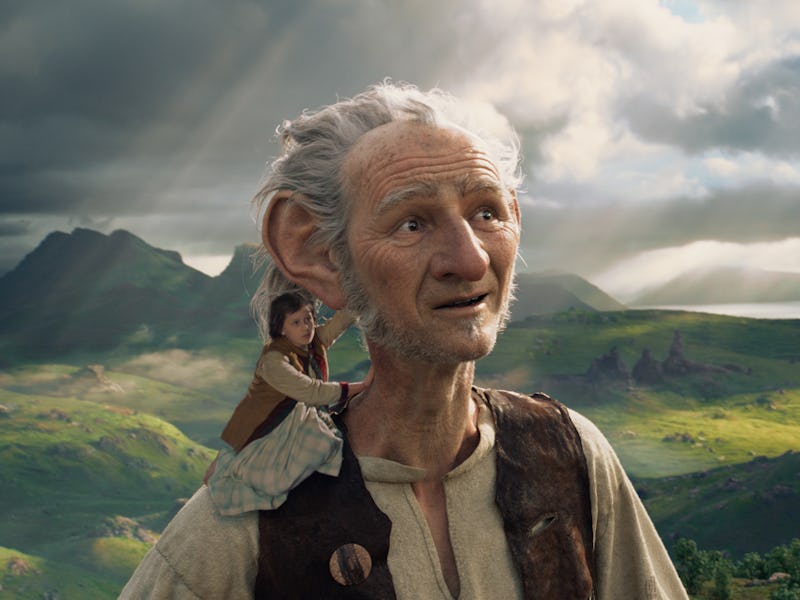A Brief History of Giants Ahead of 'The BFG'
The Roald Dahl story uses one of mythology's most recognizable and universal figures. Where did they come from and how have they changed?

For centuries, giants have played a major role in mythologies of cultures all over the world. Most cultures have tales of giants in some form or another, and though they differ in terms of temperament, appearance and significance, giants are some of the earliest fantastical creatures on record.
Steven Spielberg’s The BFG, a film adaptation of the Roald Dahl book by the same name, hits theaters on Friday, and tells the story of an unlikely friendship between Sophie and BFG (Big Friendly Giant). The giant in The BFG is of the kind and gentle variety, but that hasn’t always been the case for giants in fiction and mythology. Let’s take a look at where giants came from and what they mean to us now.
A Brief History of Giants
The word giant” comes from the Greek “gigantes.” Some of the earliest depictions of giants, Greek giants were extremely formidable creatures. They also looked pretty different from giants as we typically think of them. Greek giants were huge and looked mostly like men, save for the fact that they had the feet of serpents.
And yet, while they seem familiar to giants as we conceive of them today, it’s not a straight line path from the giants of Greek mythology to the modern day version; the winding road encompasses influences from other cultures. Norse mythology and European folklore also had a major impact on the way in which we think of giants today.
Norse mythology’s giants are among the most interesting cases of mythological giants. Called “jötunar,” the giants of Norway hailed from Jötunheim, one of the nine worlds. There’s a great deal of variety when it comes to depictions of the jötunn in Norse mythology. Though sometimes beastly, otherworldly, and grotesque, jötunar weren’t always hideous or even gargantuan in size. It turns out that it was a case of linguistic crossed wires that took us from an interpretation of the word “jötunn” from “devourer” to “giant.”
The variety extends far beyond the Norse version. From cannibals to big friendly friends and from massive, stupid oafs to cunning and destructive foes, giants aren’t the kind of mythological figures that have ever stood for or represented just one thing.
As Lotte Motz said in her influential piece, Giants in Folklore and Mythology: A New Approach, “Various attempts at probing the significance of this mythical race have yielded various conclusions: that giants meteorological phenomena, that they are the powers of the untamed wilderness, an older dynasty of gods, demons of nature, swallowers of corpses, agents of death or the dead themselves.”
Our contemporary examples of giants are a pretty dramatic departure from the giants of ancient folklore and mythology. With characters like BFG, Hagrid of Harry Potter, Paul Bunyan and even the Jolly Green Giant, many of our relatively recent examples of giants in fiction are kind, and of the “gentle giant” variety.
The BFG centers on a friendly giant, but there are malevolent giants in the mix. There’s plenty about BFG that stands in sharp contrast to the myths that shaped the way in which we view giants, but Roald Dahl’s story used a mythological standby to tell a brand new story and The BFG is a part of the continuing evolution of the way in which we interact with and draw meaning from ancient characters and concepts.